Stepping through the doors of Chicago’s Field Museum is like entering a time machine that whisks you back hundreds of millions of years. When you enter the museum, you’ll be greeted by one of its most famous residents – Máximo the Titanosaur, the largest dinosaur to ever walk the earth. But the main attraction, the one that draws countless visitors from around the globe, stands in its private suite waiting to meet you with that famous toothy grin.
The Star of the Show: Meet SUE in Their Private Suite

SUE is the most celebrated representative of T. rex and arguably the most famous fossil in the world. After nearly two decades in the museum’s main hall, SUE’s new 5,100-square-foot “private suite” opened to the general public in March 2019. The new home in the Griffin Halls of Evolving Planet offers something extraordinary that visitors never experienced before.
It’s a much more intimate space where you can get up close and personal with the magnificent predator. Step into a Late Cretaceous forest and see what other creatures lived alongside SUE, then watch animations showing T. rex in motion. The technology behind the exhibit is simply mind-blowing, using six projectors, 17 ceiling speakers, six subwoofers and four surround-sound cabinet speakers, with videos that include more than 200 gigabytes of data and run at 6,000 pixels wide, or in “6K”.
The Science Behind the Celebrity

SUE isn’t just a pretty face – this specimen has revolutionized our understanding of T. rex biology. Dating back to the Cretaceous period – about 67 million years ago – this massive predator lived to the upper end of the life expectancy of a T. rex, about 28 years. Scientists discovered this through an ingenious method: Dinosaur bones have growth rings, just like trees. After examining these rings, scientists also determined that SUE had an adolescent growth spurt – gaining as much as 4.5 pounds per day – and reached full size at age 19.
The research doesn’t stop there. In 2016, one of SUE’s tiny forelimbs took a solo field trip to Argonne National Laboratory in Lemont, Illinois, where researchers took micro-CT scans of the arm to produce high-resolution images of its interior. Those scans allowed us to get a look at SUE’s bone structure – and study how our favorite dinosaur used its arms. Even SUE’s skull tells fascinating stories about ancient life and health challenges.
From Discovery to Celebrity Status
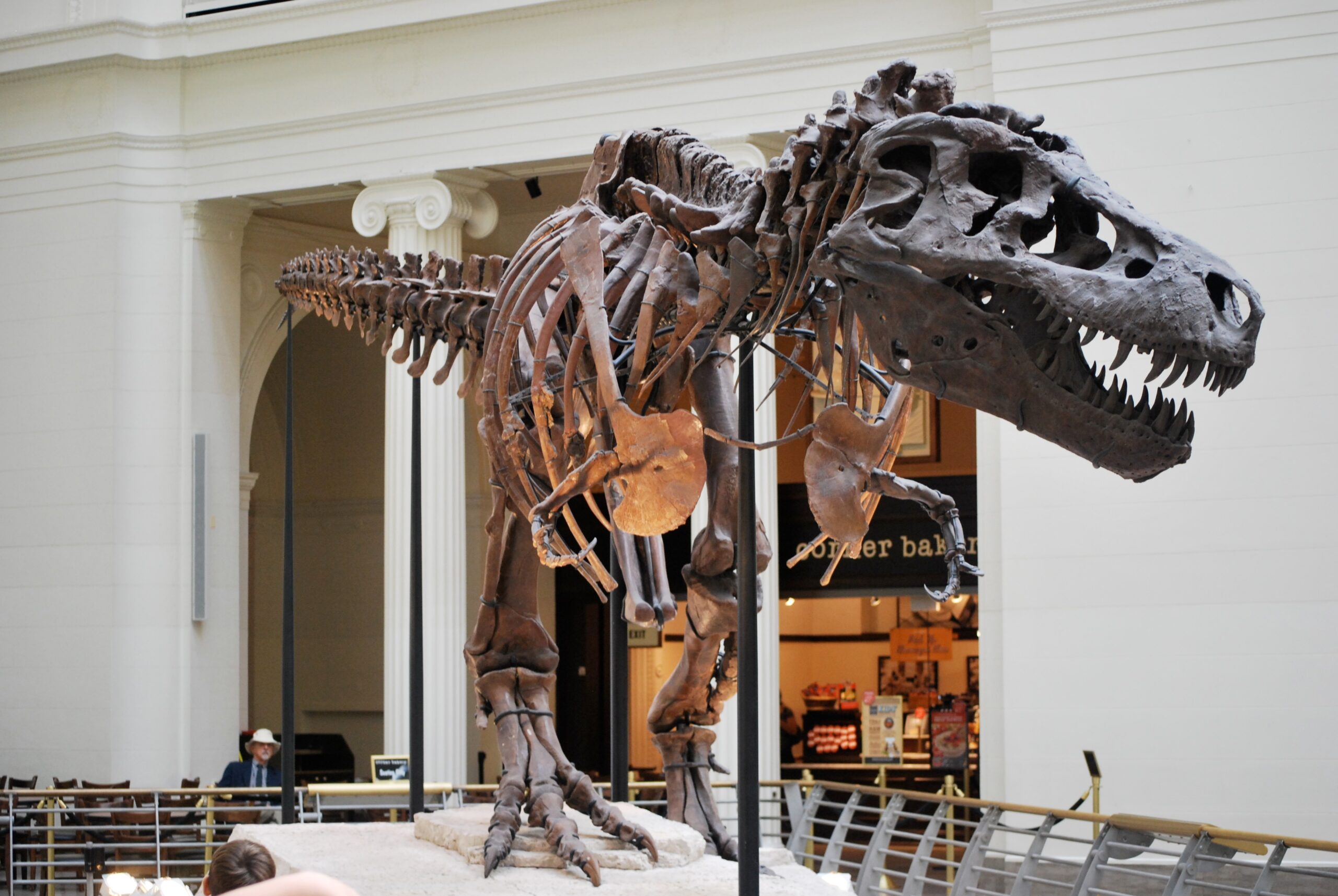
SUE was discovered on August 12, 1990, by American explorer and fossil collector Sue Hendrickson, after whom it is named. The journey to Chicago wasn’t simple, though. After ownership disputes were settled, Sue was auctioned in October 1997 for US$8.3 million, one of the highest amounts ever paid for a dinosaur fossil, making it the largest and best-preserved T. Rex ever discovered.
The Field Museum’s beloved T. rex, SUE was first exhibited to guests 25 years ago on May 17, 2000. By the time Sue debuted, the museum had no money left to move the skeleton into a space near the rest of its dinosaur collection, which had been the plan, so SUE lived in the main hall for eighteen years before getting the royal treatment in their current home.
Sue in the Flesh: When Bones Come to Life

If seeing SUE’s bones isn’t enough to satisfy your dinosaur curiosity, the museum occasionally features something even more spectacular. The museum now features a new way to see the world-famous reptile with “Sue in the Flesh.” The model was created at the Field Museum in 2019, but left to tour in 2020. This year is the first time the model has been home in four years.
This life-sized model shows visitors what SUE would have looked like with flesh, skin, and all the terrifying details that made T. rex the apex predator. The 40-foot-long, 14-foot-tall “Sue in the Flesh” exhibit was unveiled at the museum’s Stanley Field Hall. The life-size model prominently features a replica baby Edmontosaurus in its mouth. The attention to detail is remarkable – the model is so accurate that it shows a scar on the leg where scientists believe the dinosaur was injured based on the skeleton.
The Magnificent Hall of Dinosaurs
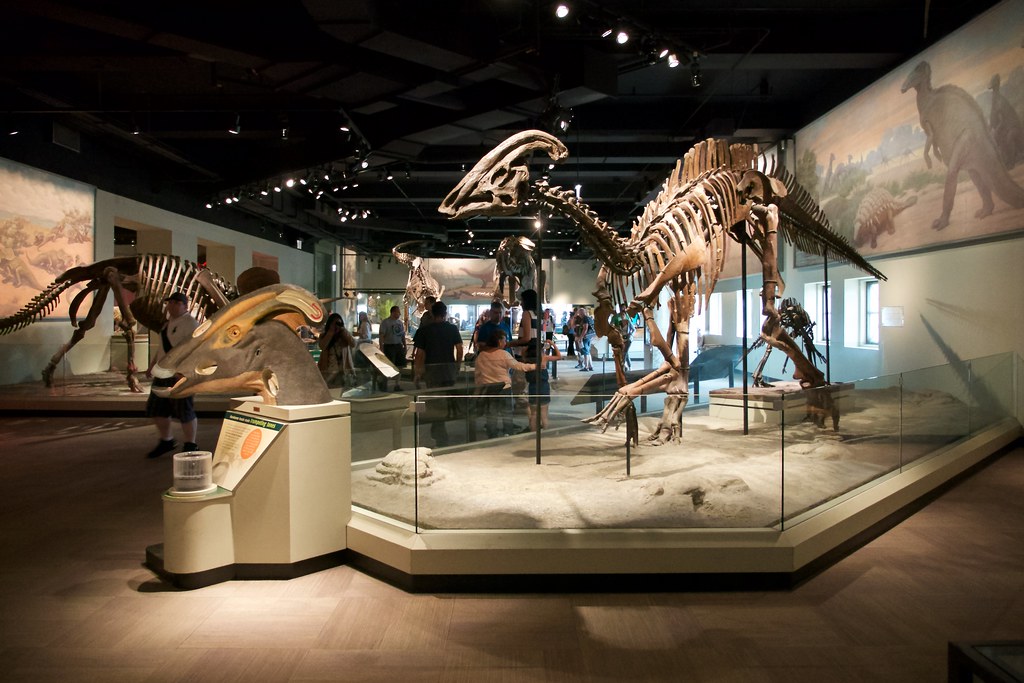
SUE doesn’t live alone in the museum. Don’t miss the Elizabeth Morse Genius Hall of Dinosaurs to get up close and personal with more than a dozen of the biggest creatures in our history. This impressive collection showcases the diversity of prehistoric life, from massive sauropods to armored herbivores.
The biggest dinosaur in the hall is Apatosaurus excelsus. But this guy wasn’t the largest of the sauropods – at 72 feet long and weighing 33 tons, Apatosaurus was more like a middleweight. The hall also features fascinating specimens like Parasaurolophus cyrtocristatus, which is a pretty special specimen – it’s the holotype, or the single specimen used to assess whether another individual is part of the same species. For a dinosaur bone to be identified as belonging to Parasaurolophus cyrtocristatus, it has to match up to this particular skeleton.
Máximo the Gentle Giant

Before you even reach SUE, you’ll encounter another prehistoric superstar in the main hall. SUE is the world’s largest and most complete adult Tyrannosaurus Rex fossil ever found, but Máximo holds a different record. The titanosaur in our main Stanley Field Hall, Patagotitan mayorum, is 122 feet long, making it the largest dinosaur ever discovered.
Máximo, a titanosaur that replaced Sue in Stanley Field Hall and is considered the largest dinosaur ever discovered, provides a stark contrast to the fierce predator waiting upstairs. While SUE represents the pinnacle of prehistoric hunting prowess, Máximo showcases the incredible size that plant-eaters could achieve. These gentle giants roamed South America roughly 100 million years ago, using their enormous necks to reach vegetation other dinosaurs couldn’t access.
Sobek the Spinosaurus: The Newest Celebrity
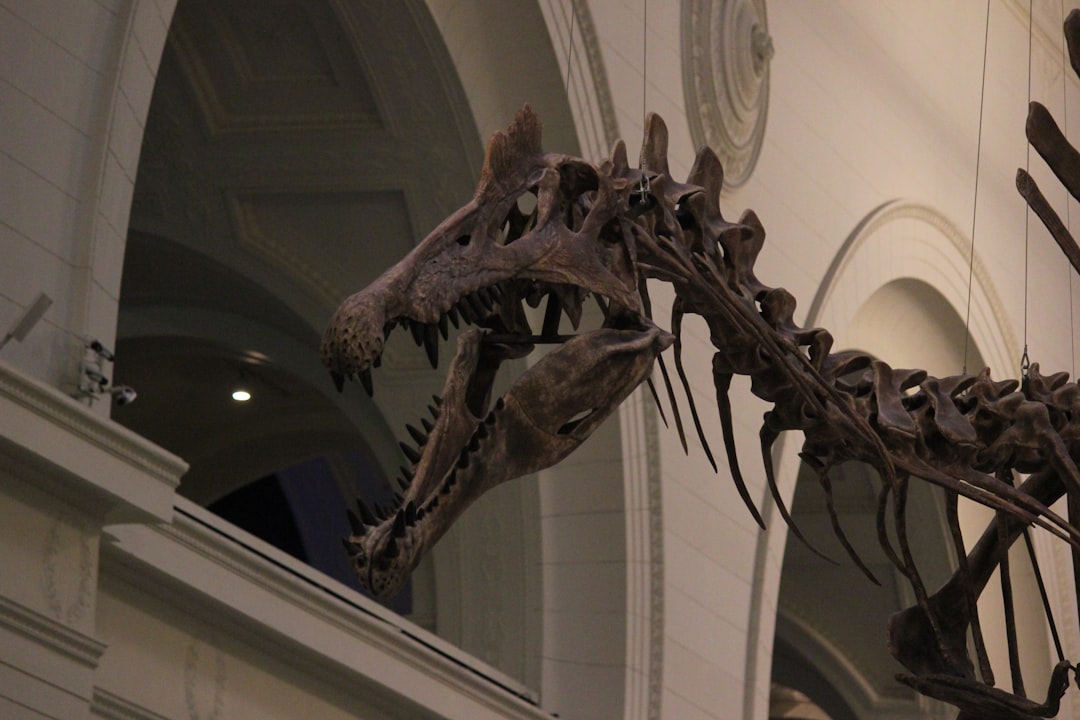
The Field Museum’s dinosaur family recently welcomed a new member. The Field Museum’s new Spinosaurus has officially been named Sobek. Sobek – the replica that lives at the museum – stretches over 46 feet long and is a “really rare fossil find”. This incredible predator represents a fascinating chapter in dinosaur evolution.
The fearsome Spinosaurus with crocodile-like jaws lived about 95 million years ago during the Cretaceous Period in parts of North Africa. Spinosaurus skeleton parts were first discovered in Egypt in 1912. More pieces were later rediscovered in Morocco, which is the skeletal version on which the museum’s replica is based. Sobek edged out Sandy with 44 percent of the vote to 42 percent, while Sabah trailed with 14 percent in a public naming contest that drew over 31,000 votes.
The Evolving Planet: A Journey Through Time

The dinosaurs are just one part of the massive Evolving Planet exhibition. In the Griffin Halls of Evolving Planet, get to know the many creatures that have roamed the earth throughout history, from single-celled organisms to our extended human family. Experience a variety of fossils, animated videos, and interactive displays that tell the story of evolution, the process that connects all living things on Earth.
This large exhibition space (26,000 square feet!) tells the compelling story of four billion years of life on Earth through interactive displays, videos, and spectacular fossils. The journey begins in Earth’s earliest days and progresses through various geological periods. Imagine our planet in its earliest days: volcanic eruptions, crashing meteorites, and the first life forms taking shape. Begin your journey through time and explore each period of our evolution, including the Precambrian era that makes up 90 percent of the planet’s 4.5-billion-year timeline.
Ancient Egypt: Mummies and Mysteries

When you need a break from prehistoric giants, the Field Museum offers other incredible journeys through time. Enter through a three-story replica of a mastaba, a type of ancient Egyptian tomb, that houses two authentic chamber rooms from the burial site of 5th Dynasty Egyptian Pharaoh Unis’s son Unis-Ankh. The burial chamber, which dates to 2400 BC, houses one of the largest collections of mummies in the United States: 23 human mummies and more than 30 animal mummies.
The museum has recently made groundbreaking discoveries using modern technology. In a four-day study, 26 mummified corpses were put through a mobile CT scanner parked outside the Field Museum. The museum said the mummies have been part of its collection for several years. These scans have revealed incredible details about ancient lives, including information about Lady Chenet-aa, who lived during the Third Intermediate Period of Egypt in the 22nd Dynasty – 3,000 years ago. The scans have determined that she was in her late 30s or early 40s when she died. The scans also showed the loss of several teeth and significant wear and tear on the remaining ones – indicating that the food she ate included stray grains that were tough on tooth enamel.
The Field Museum Experience: Planning Your Visit

The Field Museum sits majestically on Chicago’s lakefront Museum Campus, making it part of an incredible day of exploration. The Field Museum is part of Chicago’s lakefront Museum Campus that includes the John G. Shedd Aquarium and the Adler Planetarium. The Museum received 1,018,002 visitors in 2022, ranking it 21st in the List of most-visited museums in the United States.
SUE’s permanent home in the Griffin Halls of Evolving Planet is included with Basic admission or All-Access Pass. SUE and Evolving Planet are also included on free admission days for Illinois residents. You’ll find SUE inside Evolving Planet on our upper level. If you’re in our main Stanley Field Hall, follow the flying pterosaurs up the northeast stairs to the entrance of Evolving Planet.
The museum offers excellent accessibility features, including wheelchair rentals, accessible restrooms, auditory and tactile guides, sensory bags, free admissions for paid personal care assistants, and more. With almost 40 million artifacts and specimens under one roof, you could say there’s a lot to do here.
Beyond Dinosaurs: The Full Field Experience
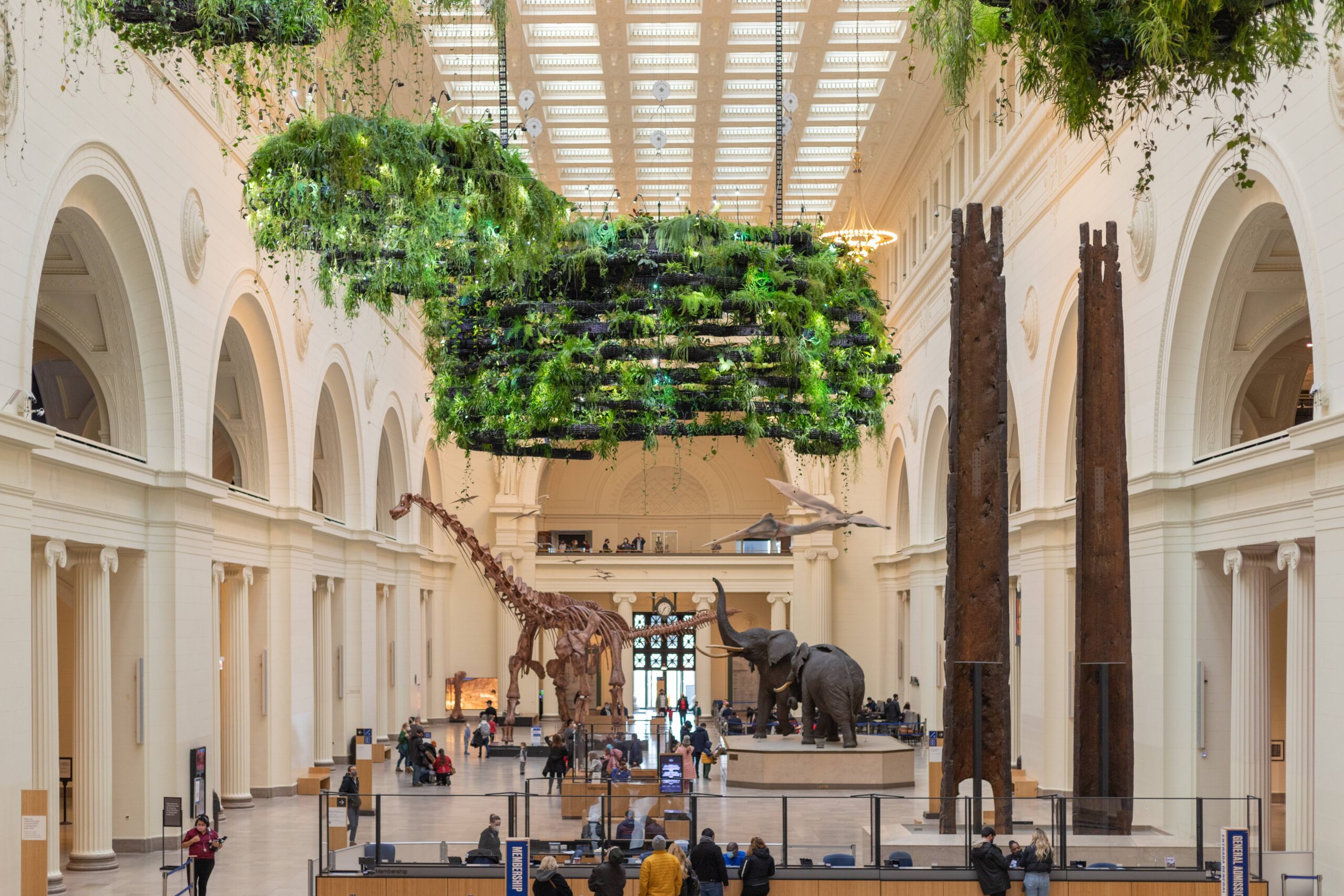
While SUE and the other dinosaur celebrities steal much of the spotlight, the Field Museum houses incredible treasures from around the world. The Field Museum’s astonishing collection includes Egyptian mummies, the man-eating lions of Tsavo, wooly mammoths, Tiffany & Co. gem, and more. Wide-ranging exhibits explore more than 4.6 billion years of natural history, from ancient Egypt to Qing Dynasty China to the prehistoric era and beyond.
The museum’s scientific mission extends far beyond public exhibitions. The vast majority of specimens and artifacts are used by a wide range of people in the museum and around the world. Field Museum curatorial faculty and their graduate students and postdoctoral trainees use the collections in their research and in training. SUE has enabled scientists all over the world to do more detailed studies of the species’ evolutionary relationships, biology, growth, and behavior than ever before.
The Summer of SUE: Celebrating 25 Years
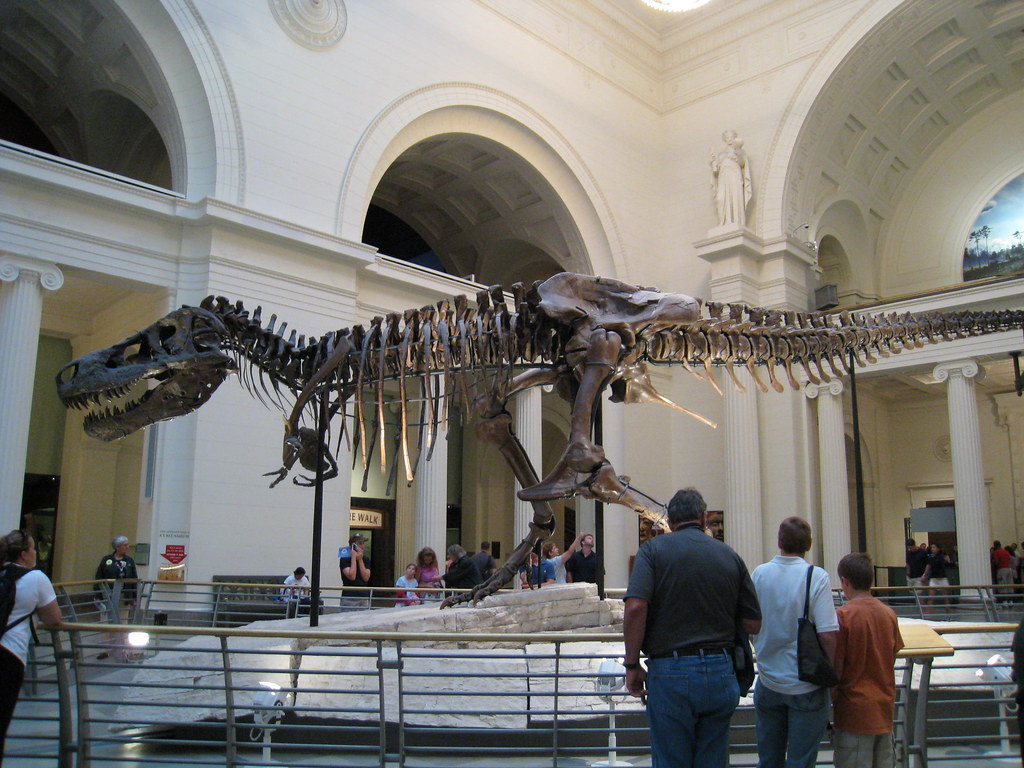
The museum recently celebrated a major milestone. 2025 is the Summer of SUE – celebrating 25 years of SUE the T.rex on display at the Field Museum. The Field Museum is celebrating the 25th anniversary of its most famous exhibit, SUE the T-Rex. The Summer of SUE starts Saturday, marking 25 years since SUE was unveiled to the public.
The celebration included special events throughout the summer, from a Dinopalooza Dino Derby on Saturday from 10 a.m. to 2 p.m. on the museum’s north lawn, featuring a children’s race in dinosaur costumes, and a race for adults in full inflatable dinosaur suits to educational programs and behind-the-scenes tours. These celebrations reminded visitors why SUE has captured hearts and imaginations for a quarter-century.
Conclusion

A visit to Chicago’s Field Museum isn’t just a trip to see old bones – it’s an incredible journey through the history of life on our planet. From the moment Máximo greets you in the main hall to your intimate encounter with SUE in their private suite, every step reveals new wonders about the ancient world. Whether you’re marveling at the newly arrived Sobek, exploring the mysteries of Egyptian mummies, or walking through four billion years of evolution, the Field Museum offers experiences that spark curiosity and wonder in visitors of all ages.
The museum stands as a testament to scientific discovery and the power of preservation, ensuring that these incredible stories from Earth’s past continue to educate and inspire future generations. What will you discover when you step through those doors and travel back in time?



